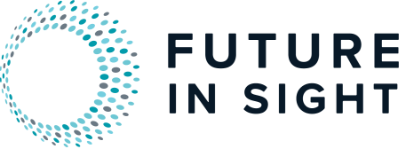
(This interview has been edited and condensed for clarity)
As part of our mission, we have long felt passionate about understanding and delivering on the needs of those who live with profound vision loss. Thanks to deep relationships with eye care professionals who refer their patients to us, we are reaching more and more people around the state who are blind or visually impaired. Yet, we know there are many more who are not being reached through these channels.
As part of a reawakening around race and equity in our country, we too have been reflecting on our mission – particularly on how to meet the needs of those who may remain unserved. We want to expand how we conduct client outreach, recruit staff and volunteers, so that we can reach and appropriately serve people of color in New Hampshire who have visual impairments. Many of us would agree that if you have limited access to education and health care, if you are living with low income, if you are a new American, or if you are a person living with a disability, life at the intersection of any of those factors poses immense challenges. It’s important to all of us at Future In Sight that we deliver on the promise of finding those individuals who are blind or visually impaired, whoever they may be, wherever they may live.
In that spirit we reached out to Deo Mwano of Deo Mwano Consultancy (DMC). Deo specializes in education and workforce success through diversity and inclusion strategies. We spoke with Deo a few weeks ago in an interview-styled conversation to capture where we find ourselves today in our collaborative work. – David Morgan, CEO
FIS: Hello Deo, thank you for joining us today! Let’s start with how we became connected?
Deo: I was referred to Future In Sight by a mutual friend of one of your board members. Prior to that conversation I had no knowledge of Future In Sight. David Morgan reached out to me and after our phone conversation I was immediately interested in learning more about what Future In Sight does. So, I visited you all in Concord to get to know the leadership team and organization a little bit more. That was the start of our working relationship.
FIS: Since then, what have you learned?
Deo: At first, I was trying to really understand the different services that Future In Sight provides so that I could figure out how they play out within the various communities in NH. Meeting with the direct services staff was really helpful to me. Doing community research has been so informative, too.
I’m learning a lot of different things. So, there is one side where, when I meet the community, I’m trying to educate the community that Future In Sight exists and they are interested in helping the community at large. So, that, part of that process showed me that nobody I spoke with had heard of Future In Sight when I first connected with them. And a lot of those folks are folks who play a critical role with the communities that they serve and the community that they represent. So, what I’m learning from that is that people are not aware that the organization exists, but people are also excited about Future In Sight’s willingness to want to engage with the community at that level.
Through my community research and community engagement I’m looking to understand how people of color in NH are utilizing services regarding vision impairment. As I continue to build relationships with the community at that level, I am also very intentional about identifying people of color in the community who might have children who are vision impaired, or a brother or sister or older folks in their family or in their community that might have vision impairment, and try to figure out what kind of services they have received or if are they receiving services at all. What I have learned is for those who do have someone in their family who is vision impaired, they get very excited to want to build stronger relationship with Future In Sight in order to be able to benefit from those services. Part of that is really encouraging to see that there is a direct connection with the community and Future In Sight at that level because there is a need and they haven’t been able to meet those needs.
I think it’s been helpful to all of us when I’ve brought in folks in the community who are vision impaired to have conversations with the team via conference call or our regular zoom meetings. The interaction has also helped to inform me better about some of the services you provide.
FIS: How would you describe Future In Sight’s goals regarding your collaboration?
Deo: As I see it, Future In Sight wants: first, to be in front of folks in the community who are vision impaired so they know that Future In Sight exists and it’s a place where they can go and receive resources, regardless of what background they have. They’re aware that they haven’t served many people of color within our community so part of their goal is to change that in a meaningful way. Second, another tangible goal is looking at different career pathways to attract people of color who may be interested in this work (note: one example is a paraprofessional in a school system who may be interested in building a career as a Teacher of Students with Visual Impairments) and connecting them to programs and resources that make that affordable. And, third, in terms of the tangible stuff to be able to identify individuals that might be interested, people of color, that might be interested in volunteering on committees or on the board in order to expand the work at that level.
FIS: So, what’s next?
Deo: So, the next step is really to try to figure out where there are opportunities to move forward. For example, if we know that education and awareness is an area where there is a big gap, what does it look like to better educate the community around the services that Future In Sight provides and what does it look like in terms of being able to create content or materials that will inform folks? That includes looking at language and graphic considerations that need to be included in how the materials are put together. And then the other piece of that awareness and education piece is also how do you then distribute the content? Who are the key individuals or organizations that need to have those materials so they feel more educated around the services but also feel comfortable to refer people to Future In Sight? And for me, a lot of my work is very collaborative. So perhaps that means that I work with the marketing team and we start looking at the current marketing materials and determine where there may be opportunity to translate those materials, have the right imagery and have the right messaging on them in order to be able to distribute it to the folks in the community who
The third area is definitely around building relationships, which is actually, when I look at the priorities, that is kind of the first, that’s how my model works. This next phase of my work is working with the organization to figure out how the organization has direct relationship with the community itself. I could still play a very important role of orchestrating and facilitating those engagements, but I do want to kind of figure out, the capacity Future In Sight has to build relationships with these communities beyond me. It is going to be very important for Future In Sight to take ownership of those relationships within the communities you wish to serve.
In closing, I think that is going to be a very important part of this work. So, part of that designing relationship building, you know, maybe we do monthly meetings, virtual or in person or whatever it is, where there is a set of questions, vice versa, sometimes those questions come out of the community members, sometimes the questions come out of Future In Sight. You might convene a 60-90 minute meeting where folks who are working with minority communities in NH – especially around disabilities – could come together and talk about what they are experiencing. I have noticed in a lot of my information gathering, there is really not an outlet for minority community members to be able to talk about issues around the disability field.
So, I do think that there might be a really awesome opportunity here for Future In Sight. I think it would be a great way for FIS to strengthen relationships with minority communities in NH.
FIS: Many thanks, Deo. We’re looking forward to accomplishing our goals with your help!

